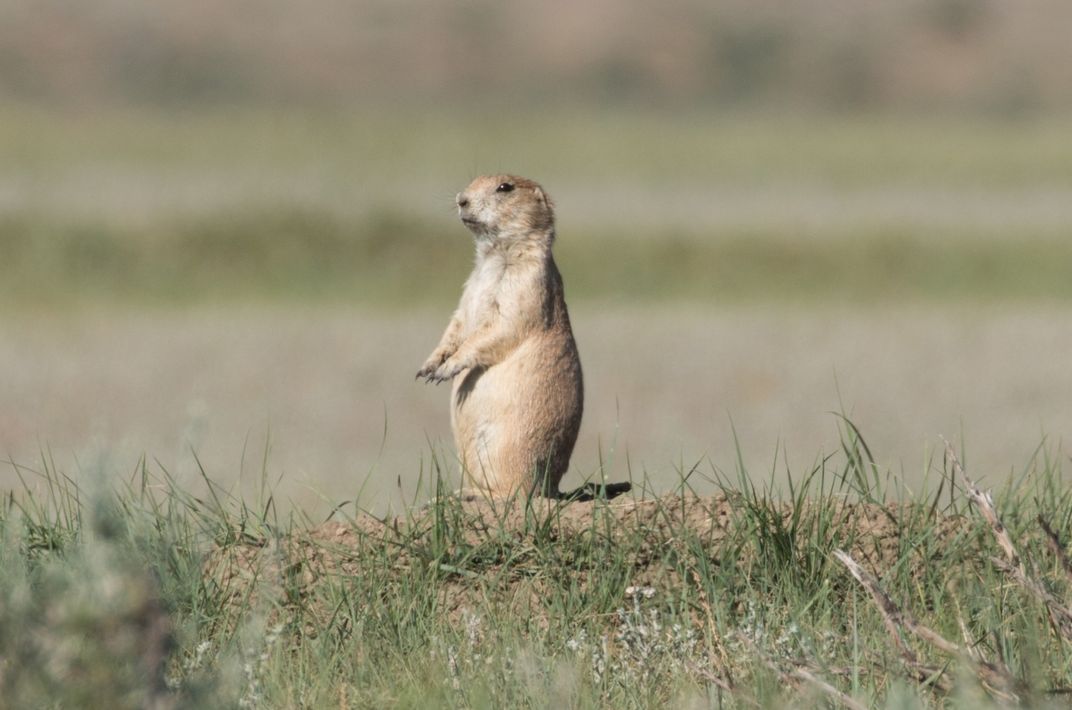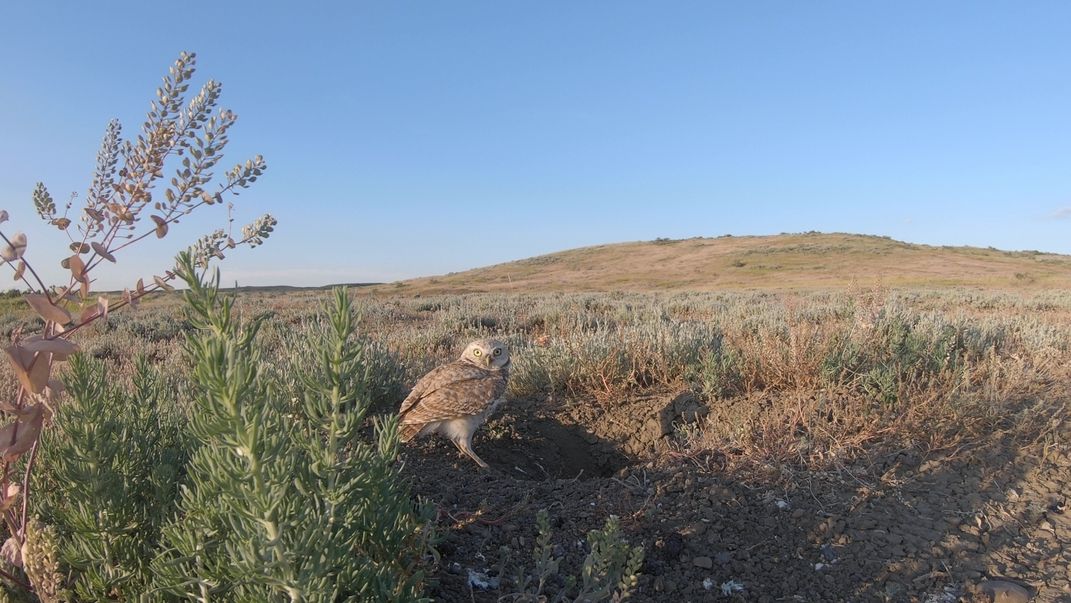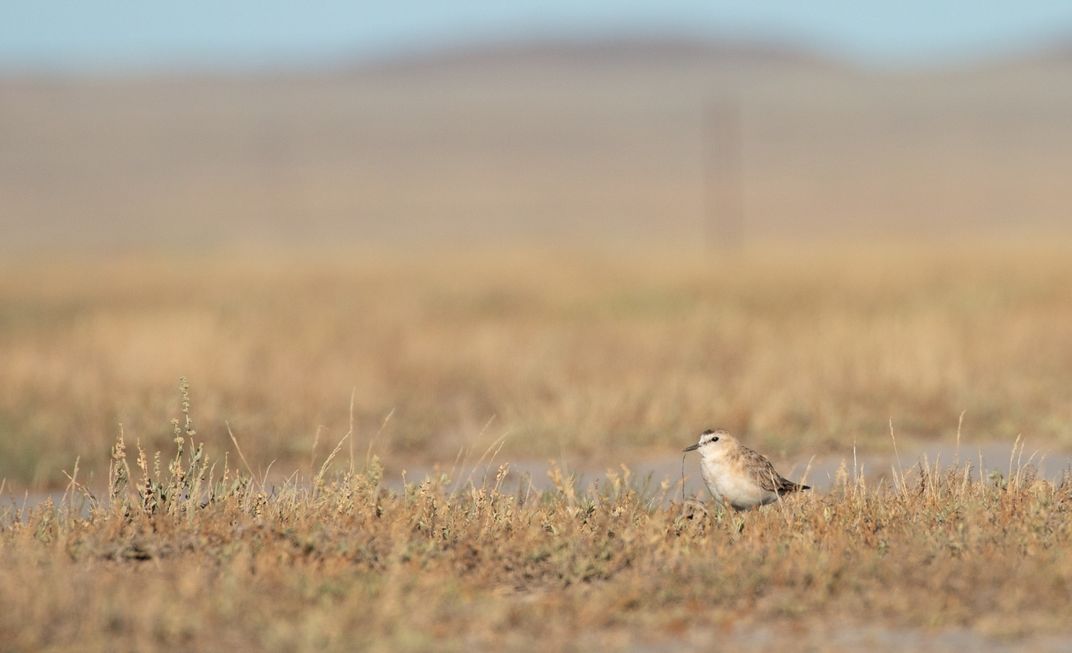NATIONAL ZOO AND CONSERVATION BIOLOGY INSTITUTE
Ecologists Dig Prairie Dogs, And You Should Too
Are prairie dogs pests or ecosystem engineers? It all depends on your point of view
Varmint, gopher, keystone species, ecosystem engineer. What prairie dogs are to you depends on your point of view. Although many people view prairie dogs as pests, ecologists absolutely dig them. At our field site in north-central Montana, we’re learning more about how black-tailed prairie dogs change the landscape and support the many species that call the prairie home.

Prairie dogs are not big and charismatic like bison, grizzly bears or pandas, but they are just as important and perhaps even more controversial. The cause for their controversy is the same reason that they are so important: these burrowing rodents make a unique and significant impact on the prairie landscape.
Prairie dogs live in huge colonies composed of countless small family groups, called coteries. They are prolific diggers, constructing complex burrow systems with specific areas for sleeping, nursing young, storing food and even disposing of their dead. A single colony’s burrow system can cover thousands of acres, with an average of about 20 prairie dogs per acre in the summer after the young emerge. That’s why these burrow systems are sometimes called prairie dog towns.
And they house more than just prairie dogs. Critically endangered black-footed ferrets eat prairie dogs (almost exclusively) and are not found outside of prairie dog towns. Desert cottontail rabbits, prairie rattlesnakes, barred tiger salamanders, plains spadefoot toads, camel spiders, innumerable insects, and other animals that can’t dig on their own also live in prairie dog burrows. Some species occupy active burrows while others, such as burrowing owls, find shelter in abandoned areas.

But life has been tough for prairie dogs over the last 200 years or so. Just as huge herds of bison once roamed the plains, prairie dogs used to live on enormous swaths of grassland in numbers more like cities than towns. Naturalist Vernon Bailey once described an enormous prairie dog town that in 1901 spanned nearly 25,000 square miles across central Texas and contained an estimated 400 million prairie dogs!
Prairie dogs transform the landscape through digging and grazing, and in those numbers it’s easy to see why early European colonists saw them as a destructive force. The colonization of the West led to the prairie dog’s current conservation predicament. The conversion of prairie to farms destroyed their habitat, and systematic poisonings removed colonies from land set aside for cattle. Over time, prairie dog numbers dropped by more than 95%. Their story represents more than just the loss of one species; it also accelerated the decline of the suite of species supported by prairie dog engineering.
Prairie dogs don’t only change their environment by digging burrows. With the diligence of a greenskeeper at a golf club, they also keep the lawns around their colonies neatly trimmed. They constantly graze on grasses and clip other plants to the ground, both to eat and to maintain a clear view of potential predators in all directions. When they spot a predator sneaking up — whether it’s a badger on the ground or a ferruginous hawk in the air — they immediately sound the alarm by repeatedly “yipping” to warn their neighbors about the threat.
Prairie dog landscaping incidentally creates another unique habitat for other wildlife. Birds that live in short-grass habitats often prefer prairie dog towns to similar areas without them. Some of these birds, like horned larks and long-billed curlews, are still relatively common.
Others, such as the mountain plover and thick-billed longspur, are rapidly disappearing. In fact, grassland birds are the most steeply declining group of birds in North America. Mountain plovers and thick-billed longspurs lose about 2-4% of their population each year. Could restoring prairie dogs help save them?

Despite their many benefits to other grassland species, prairie dogs continue to lose ground. In the 1930s, the sylvatic plague (the same bacterium that causes the bubonic plague in humans) was accidentally introduced to prairie dogs by fleas that arrived on ships from other parts of the world. Sylvatic plague typically kills prairie dogs, because they have little resistance to the disease. Outbreaks remain widespread to this day and can wipe out entire colonies in a matter of months.
Recreational shooters also use prairie dogs as target practice, killing large numbers of the colonial rodents. Additionally, because prairie dogs eat many of the same grasses as cattle, they are still perceived as a threat and intentionally poisoned. However, the evidence that prairie dogs and cattle compete for resources is mixed.
Although prairie dogs clip and eat grasses, they also help maintain grassland habitat for cattle. Their landscaping prevents woody shrubs from taking over and can increase the nutritional quality of grass by promoting the growth of young grasses that contain extra protein and are easier to digest. Competition between prairie dogs and cattle is a hotly contested, nuanced issue, and more research is needed to understand the full picture.
Prairie dogs face an uphill battle, and although we have learned a lot about them, the story is far from complete. We know one aspect that keystone species like prairie dogs, bison and wolves share is their indirect, yet important impact on the animals around them. By studying prairie dogs at American Prairie Reserve, Fort Belknap Indian Reservation, and Charles M. Russell National Wildlife Refuge in Montana, we hope to uncover the how and why.

Beyond burrowing and grazing, why do prairie dogs support so many animals? How do they influence individual species differently? By studying the animal community out here, we aim to unravel the details. For instance, do nesting birds and their chicks get a boost to their diets from the communities of insects, spiders and other arthropods that live on prairie dog towns?
If these research efforts help us understand how prairie dogs affect the species that rely on them, then conservationists and land managers across the Great Plains will be better equipped to conserve and manage prairie biodiversity — all thanks to the industrious engineering efforts of a social, burrowing rodent.
